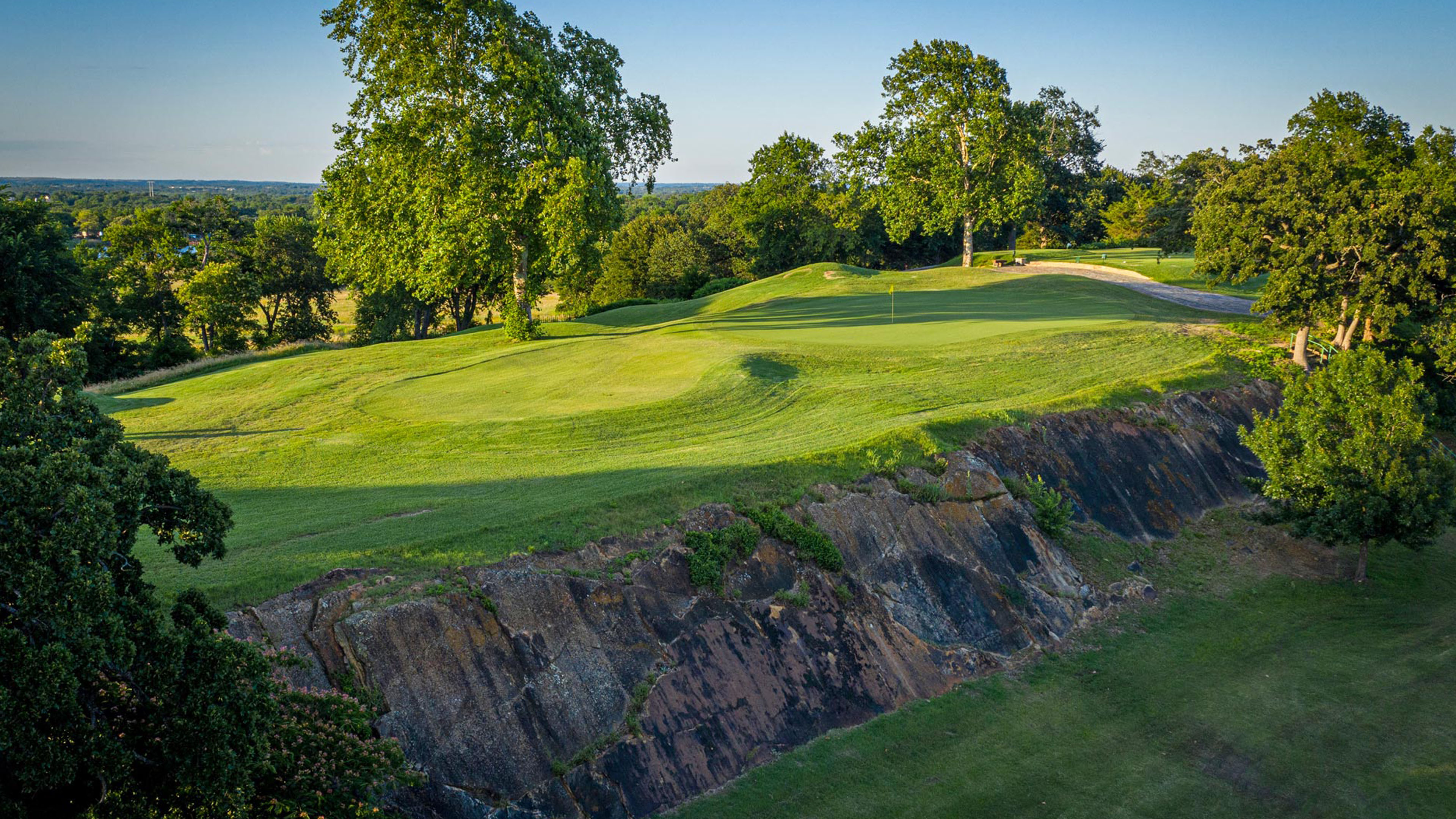
As mentioned in Angle of Attack at the end of Episode 16, I shared with Andrew a recent round played at Dornick Hills in Ardmore, Oklahoma. Dornick Hills is the home of Perry Maxwell -- the architect's first course design, and is just a brilliant and fun classic course design. It has some unique holes that you truly won't find anywhere else in the world, including the par 5 "Cliff Hole" 16th, with a green perched on top of a 40-foot granite cliff. Combine it Maxwell-style greens, brought back to life by Tom Doak and Renaissance Golf Design two years ago, there's a reason why I like to call it "the best golf course in North Texas".
Going off first as a single on Saturday morning, I expected to burn around the course in less than two and half hours. That was until I was walking down the sixth fairway and was approached by a twosome in a cart looking for the 12th tee (which is on the far corner of the property). This is when I looked up and saw cart scattering around the back nine. There was scramble outing going off as a shotgun start on most of the back nine and the first hole. Any hopes of a 36-hole day were now doomed.
Instead of forging ahead and eventually getting jammed up by the 11th hole, I walked back to the 4th tee (adjacent to the sixth fairway) and decided to try a new format. Two-ball, worst-ball scramble. The experience was very eye opening and revealed a lot about my game. Here were some of the key benefits of the worst ball format:
Exposes Flaws in Your Game
You might be able to mask a flaw in your game over the course of a golf round. Maybe you're awful at bunker shots but manage to avoid it for eighteen holes. Maybe you have a big miss that doesn't pop up that day. The equation completely changes when you have to hit two good shots in a row. It's very likely that you'll make some big numbers and start seeing patterns for what is leading to those double and triple bogeys.
Stresses the Importance of Chipping and Lag Putting
Worst-ball scramble simply changes the strokes gained calculus for proximity of the hole. In a traditional round of golf, chipping to 3' instead of 5' increases your make rate on the next putt by 20% (approximately 75% to 95%). But when you have to make two of them, the benefit increases by 34% (56% to 90%). The steepest strokes gained benefit comes right in that critical range. You'll quickly learn the benefit of lagging putts to tap-in range to avoid having to make two knee-knocker putts.
It's worth noting that worst-ball scramble is also a great format for your practice on and around the green. Better yet, find a friend and play match play worst-ball scramble around the putting and chipping green.
Improves Course Management
Irrational confidence is common characteristic in golfers. Pulling off high-risk shots is one of the best thrills of the game. However, the risky decision often isn't always the best decision for your score in the long run. Worst ball scramble forces golfers to weigh the risks and rewards more carefully, because the cost/benefit dynamics are amplified when you have to pull off the shot twice. You'll likely find yourself thinking about where to miss (and where not to miss) a lot more often.
Manufactures Pressure on 3-8' Putts
As mentioned earlier, the key to scoring is on the chipping and lag putts. But in this format, you're likely to face a lot of 3-8' putts. This format manufacturers quite a bit of pressure after you've made your first 8 footer and need to back it up with another make. I learned to develop a more consistent pre-shot routine and saw great results on these shorter putts.
Andrew covered Worst-Ball Scramble in a recent YouTube video. Check it out:

Inspiring golfers to pursue this great game with drive and passion
Keywords
Related Posts
Free E-mail Newsletter
Subscribe to the DRVN Golf Newsletter
DRVN Golf in your inbox, every month